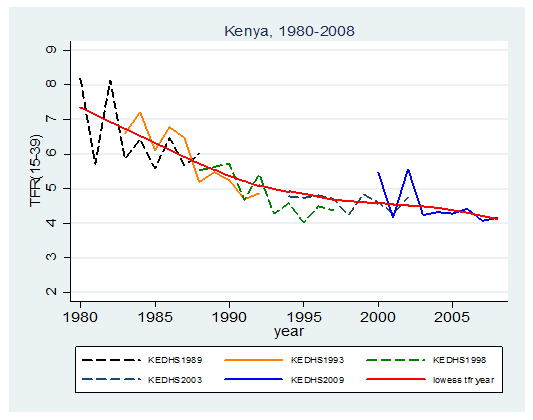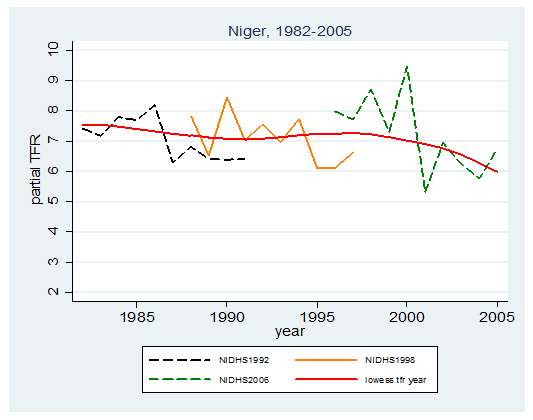The Total Fertility Rate (cont.)
Other sources of fluctuation in the TFR
The period TFR can fluctuate because of tempo effects – that is changing decisions about childbearing on a year-by-year basis. But it can also fluctuate because of data errors and inconsistencies. It is quite possible to construct a confidence interval around a TFR, although this is not commonly done.
We have mostly considered TFRs from data that derives from vital registration and censuses. In developing countries this is not the normal data source – the normal data source is a survey.
A demographic survey will usually ask women for a Birth History . This is simply a systematic list of children borne, with dates. It may be a full birth history (all children ever borne) or a short birth history (only children born in a defined period prior to the survey). From these TFRs can be derived year by year before the survey. In the case of full birth histories, and by concatenating survey results, fertility rates extending back many years from the survey can be constructed. They are typically quite a ragged series, not only due to tempo effects but also due to the normal survey problems – date and age misstatement and omissions of births.
 |
 |
Source: Kazuyo Machiyama. PhD Thesis 2011. LSHTM
Here are two examples. Several surveys have been put together. In the case of Kenya, although the series is fluctuating there is a clear fertility decline that is shown by the smoothing line drawn through the series. In Niger the data is even more erratic – suggesting poor reporting – but even so a trend does emerge, in this case a fairly flat trend. Clearly the Niger trend is less precise and the decline at the far right could well be spurious. You can see that for each Niger survey the estimates on the right always seem to be lower than those on the left – suggesting a fertility decline that unfortunately is not borne out by the next survey. It always pays to be cautious about trends unless the data seem to be behaving consistently.